Fresh fish is vastly preferable to frozen, because frozen fish will lose much more juices when it’s cooked than fresh fish. And thus frozen fish often ends up unpleasantly dry on your plate. Unfortunately fresh fish is not available everywhere, and you may not always be able to eat fish on the same day that you purchase it. Or the type of fish you’d like to eat is not caught locally. In such cases, frozen fish is the only option you’ll have left.
Wild salmon is only available frozen around here, because it is imported from Alaska. I’ve tried it, and thought it was too dry. Then I thought that perhaps it would be better if I cooked it sous-vide straight from its frozen state. I tried this with frozen farmed salmon as well as frozen wild salmon. Here’s what I found.
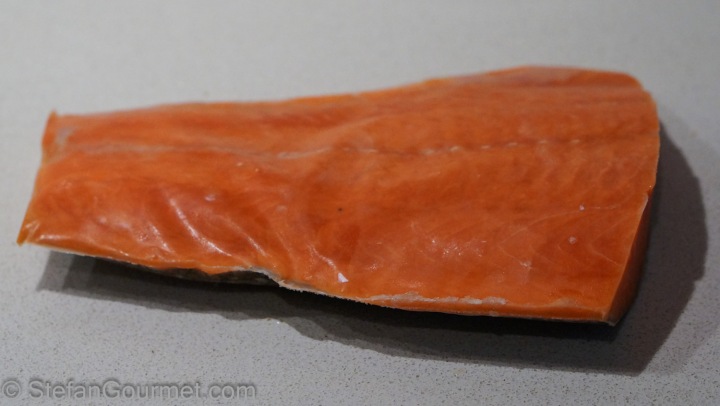
I started with a frozen piece of salmon and took it out of its cryovac (vacuum) packacing.
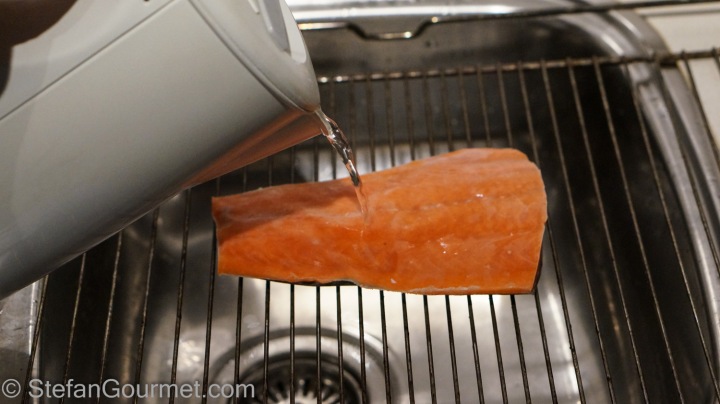
I poured boiling water on the outside to kill any contamination on the surface area.
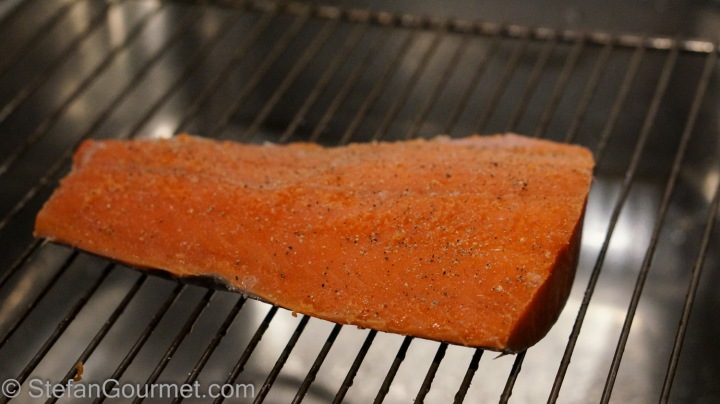
I then seasoned the salmon with salt and freshly ground black pepper…
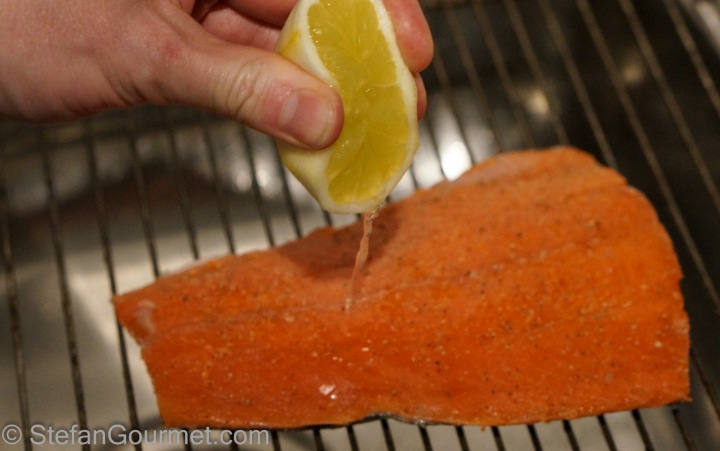
…and sprinkled it with some freshly squeezed lemon juice.
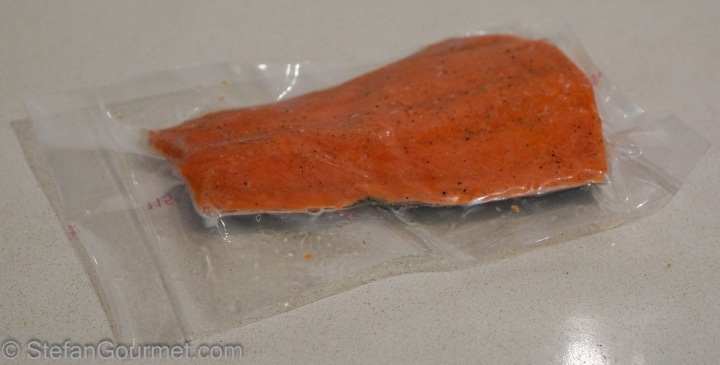
I vacuum sealed the piece of salmon…
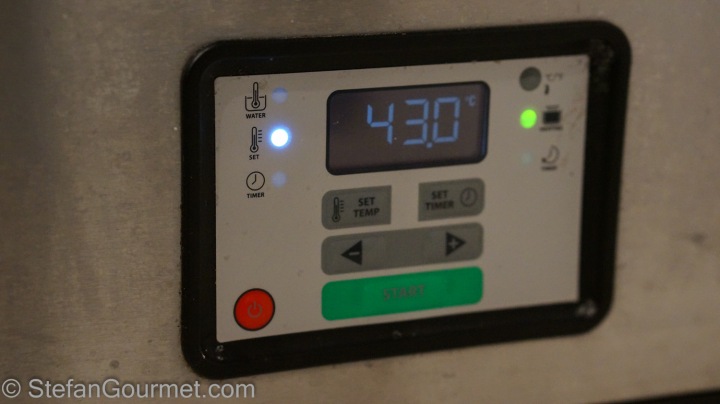
…and cooked it sous-vide for 30 minutes at 43ºC/109ºF.
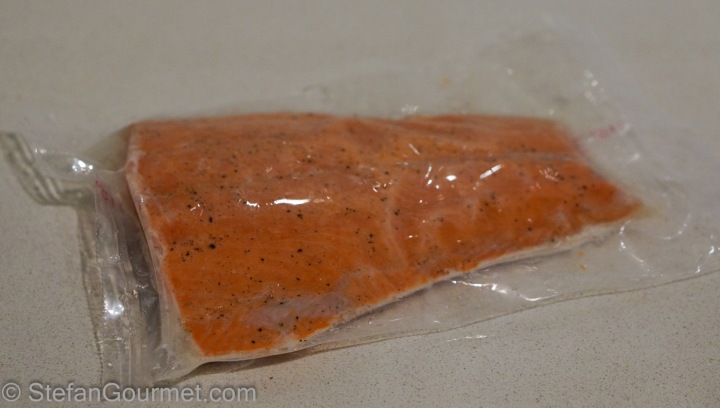
30 minutes is enough to bring the center of the salmon from the frozen temperature of -18ºC/0ºF to the target temperature of 43ºC/109ºF, as long as the salmon is not thicker than 2 cm (.8 inch).

I took the salmon out of the bagie and patted it dry with paper towels.

Then I seared it very briefly over high heat in a bit of olive oil. (Clarified butter would also be great.)

I seared it on both sides, but very briefly as to not overcook it.
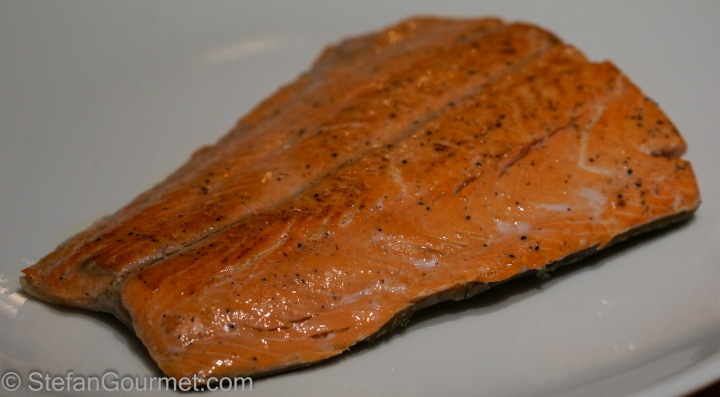
The salmon looked very nice on the outside…

…as well as the inside. Even though the wild salmon was still a bit dry, it was much better than the pan-fried version. I am not able to compare it to fresh wild salmon, as that is not available around here. The dryness of the wild salmon is mostly due to its low fat content. From the salmon available here, I prefer the farmed variety because it is more fatty and when cooked sous-vide becomes amazingly buttery. The farmed salmon was excellent when prepared this way, it was almost the same as fresh!
Conclusion: frozen salmon can be cooked sous-vide without defrosting it first, and the result is very similar to using fresh salmon. This is certainly true as far farmed salmon is concerned, and I expect it to be true for wild salmon as well. If anyone has experience using fresh wild salmon cooked sous-vide, please leave a comment.
Flashback
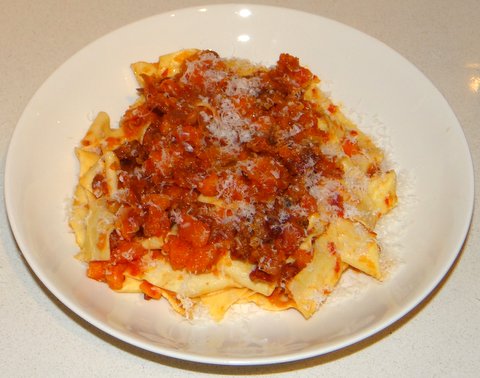
The photo doesn’t do it justice, because these fresh tagliatelle with a prosciutto sauce are amazingly delicious. The secret to this dish is to use good quality ‘sweet’ prosciutto, otherwise the sauce will become too salty. This pasta sauce has great depth of flavor and is worth trying, even if you prepare it with store-bought fresh tagliatelle rather than making your own.
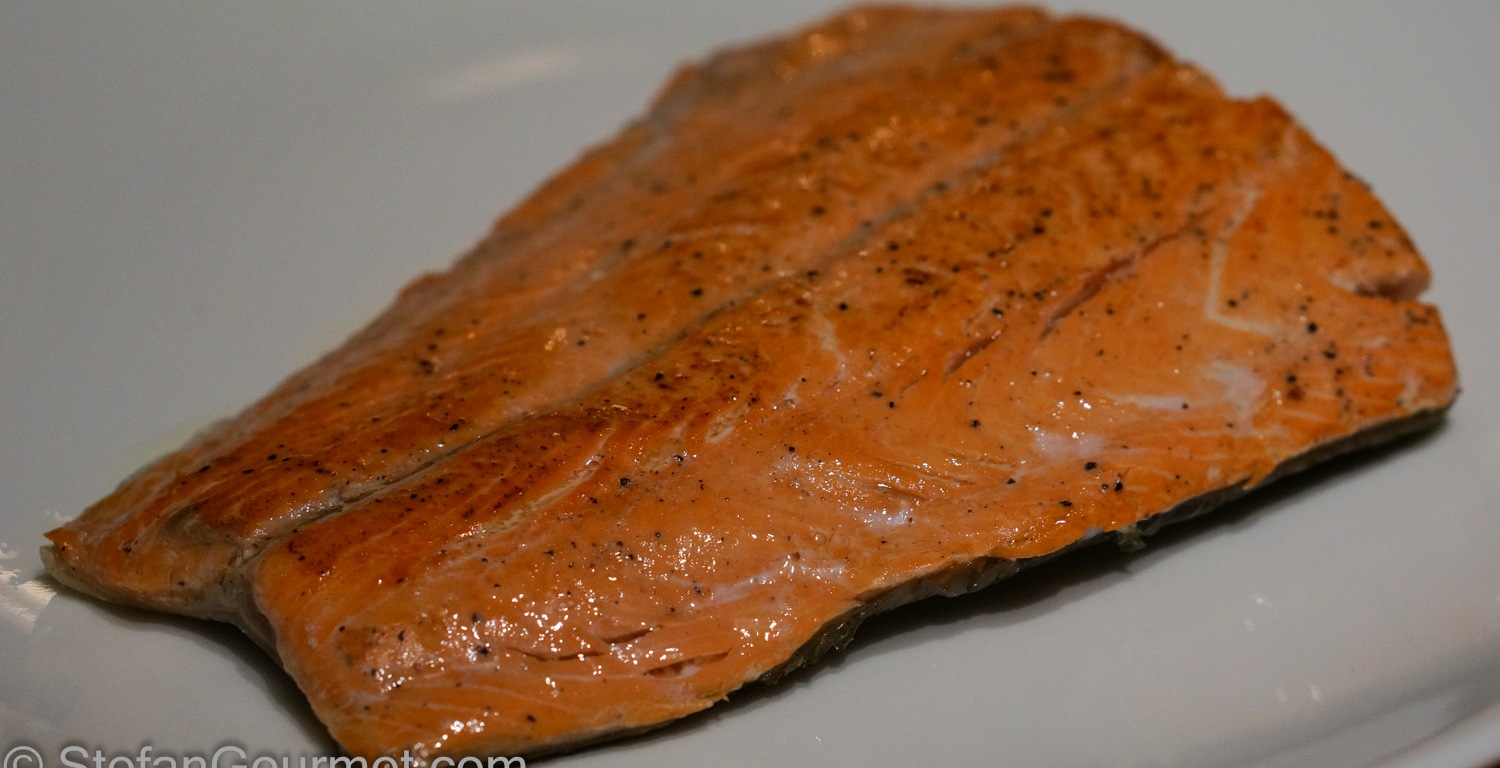

Excellent experiment Stefan.
LikeLike
I did that grill over the sink thing on some pork belly. How come your sink and your grill look so much cleaner than mine. I know, you clean them,…
LikeLike
Fascinating! So good to know, as I can only purchase frozen salmon where I live…
LikeLike
great experiment! I cook frozen salmon quite often since the non-frozen version is usually farmed with color added and not very tasty, but I can get wild frozen salmon from Alaska that is so much tastier. Have you ever been to Alaska? We had some amazing fish when we went there…definitely worth the trip!
LikeLike
I’ve never been to Alaska. Not sure if I’d go there just to eat the fish though 😉
LikeLike
well, there are glaciers and amazing wildlife as well 😉 we went in July many years ago, but I want to go back later in the summer to see the northern lights…and eat more fresh fish of course!
LikeLike
Stefan,
there are vast differences between the various wild salmon species commonly caught in Alaska. You picture seems to show the deeply red Sockeye type, which is very low in fat, and easily cooks up dry, even when prepared fresh. (It’s actually great for curing graved style). Had you used i.e. a much fatter King salmon, the results would be more comparable to what you are used to from the farm raised, atlantic (salmo salar) variety. JoR
LikeLiked by 1 person
Thanks Joachim. Here I have only seen the deeply red Sockeye type, so I am sticking to the farmed salmon. If I can ever get fresh sockeye, I will use it to make gravlax.
LikeLike